Focus: Why Do You Need a Productivity System?
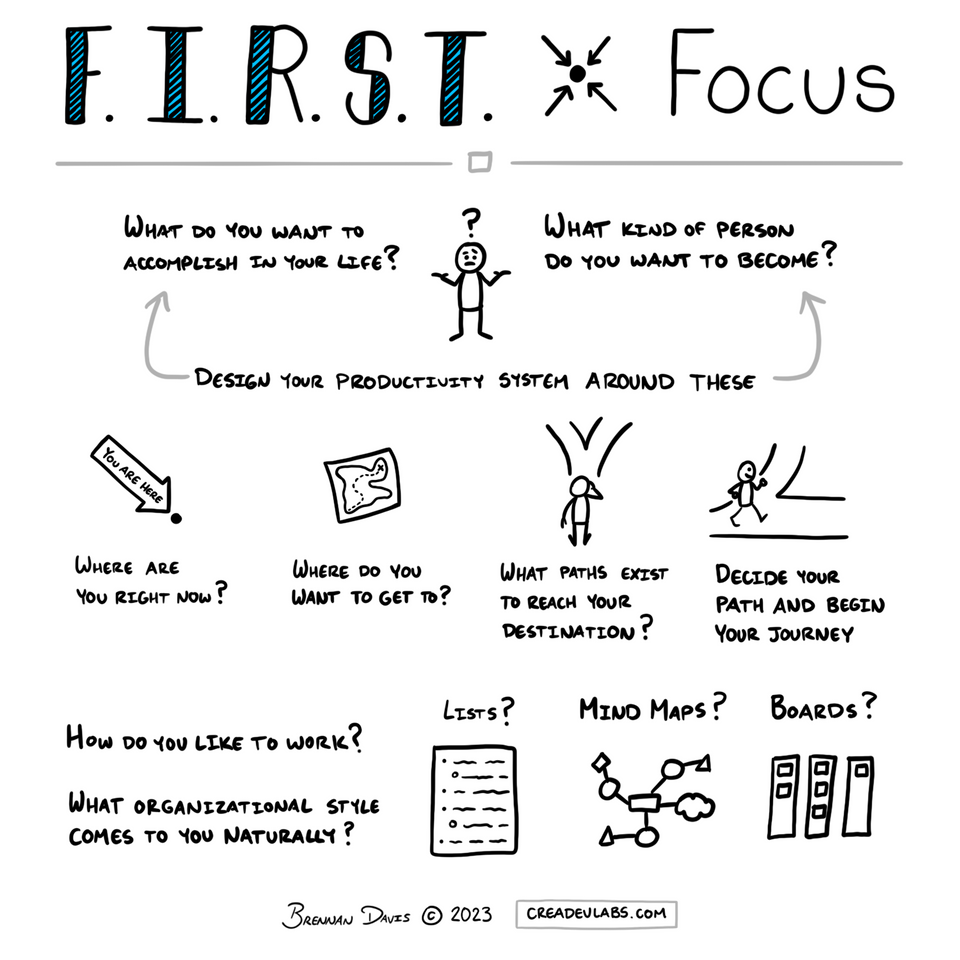
In the first article in this series I gave you five principles for crafting your perfect productivity system. Those principles are:
- Focus
- Iterate
- Record
- Simplify
- Trust
The first of these principles, Focus, helps you answer this question:
Why do you need a productivity system?
There are productivity experts out there right now climbing over each other to answer this question for you.
I got to you first, though, so here's the answer!
.......
Well, uh, I don't know.
I don't know why you need a productivity system. I know why I need one. I have lots of reasons why I need one. And my reasons for needing a productivity system are going to be different from yours.
I can't answer the question of why you need a productivity system because I'm not you.
Those other productivity experts can't answer it either.
The only person who can answer why you need a productivity system is you.
If this is true, how do you go about figuring it out?
Let's do a little exercise!
Close your eyes and picture yourself at some point in the future. Let's say 5 years from now (I know that's cliche, but bear with me). What do you look like? What do you picture yourself doing? What would be the ideal version of you?
Got the picture in your mind? Good! Write down what you see. Describe in words the person you want to be and what you'd like to be doing.
With this vision of future you, you now have a direction, a focus for your productivity system. You have a goal, something to shoot for. You can design a system to help you become that ideal version of yourself.
But how do you close the gap between where you are now and where you'd like to be? How do you start crafting your system?
By answering some more questions!
Think about how your mind works. What organizational styles come naturally to you? What conditions need to exist for you to do your best work?
Some examples of organizational styles are:
- Lists
- Tables
- Kanban Boards
- Mind Maps
- Flow Charts
- Sketches/doodles
If you know the answers to these question already, that's great! You can start searching for tools that match your working style.
If you don't know the answers, that's okay too! This is where the next principle of FIRST, Iterate, comes into play. We'll take a look at Iterate in the next article in this series.


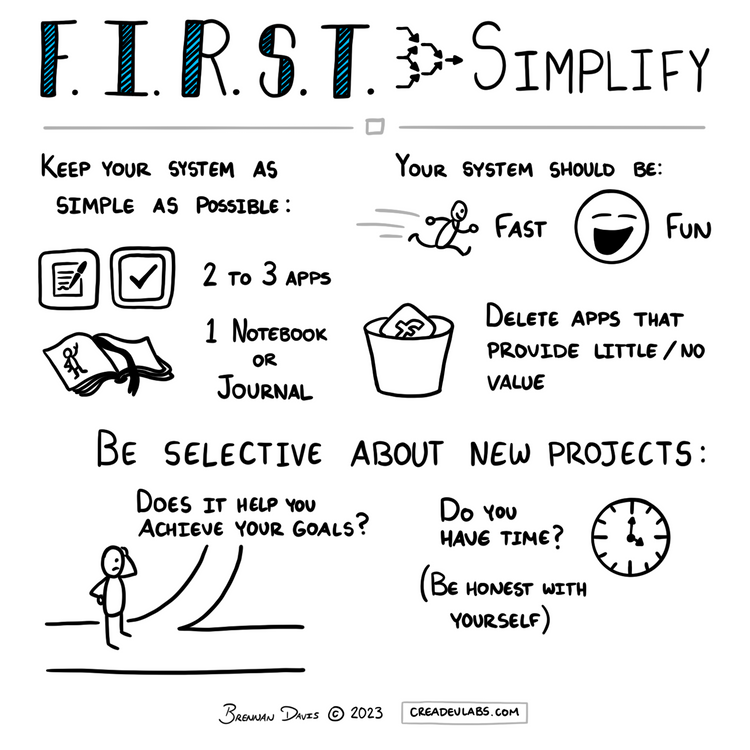
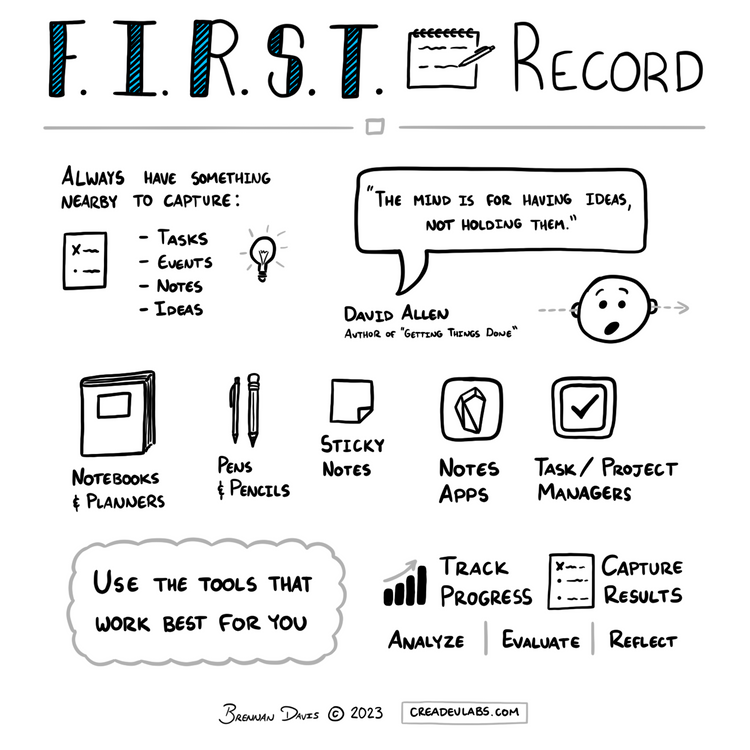
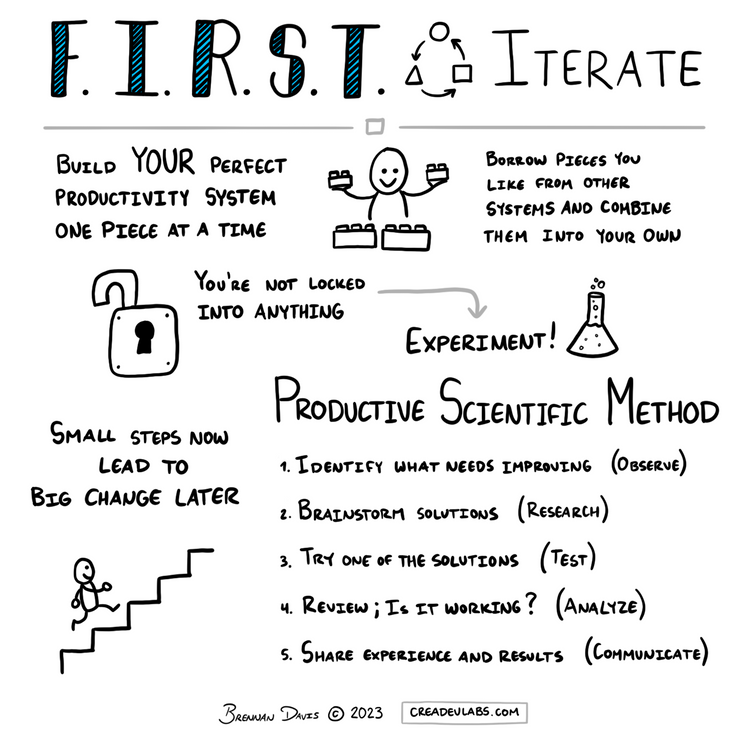
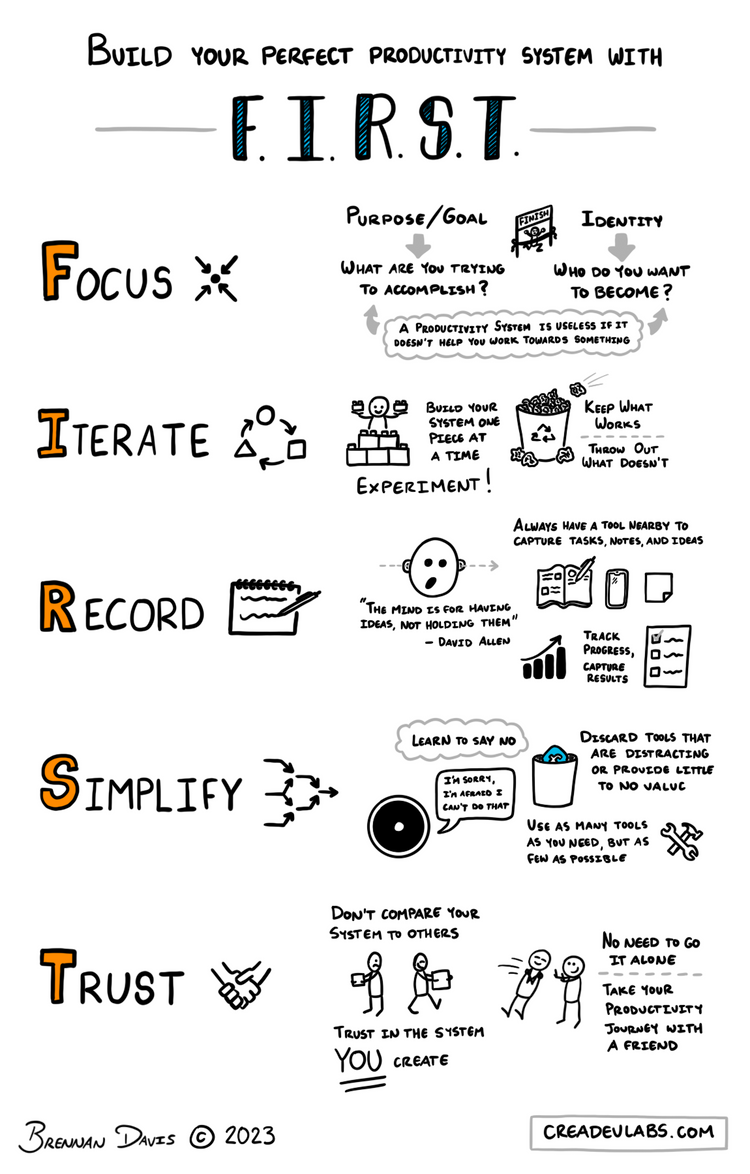
Member discussion